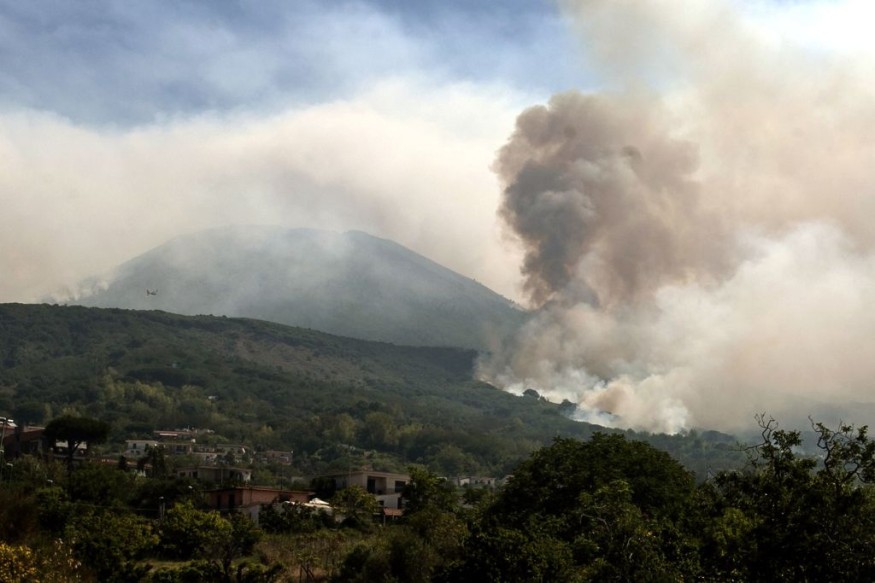NASA Earth Observatory's recent Image of the Day features the cone of Mount Vesuvius that peaks through a break in the clouds earlier this month.
Mount Vesuvius, located on the Gulf of Naples in Campania, Italy, is "the only active volcano" on the mainland of Europe, Earth.com reported.
The so-called stratovolcano had a famous eruption in AD 79 that devastated the Roman cities of Pompeii, Herculaneum, and Stabiae, together with some other settlements.
During the disastrous eruption, volcanic ashes and gases were released more than 20 miles into the sky.
Rock and lava were ejected at a 1.5-million tons per second rate, with a thermal energy level 100,000 times the Hiroshima and Nagasaki bombings.
According to a NASA report, Naples has a three-million-people population, 800,000 of whom reside on the slopes of the volcano, making Vesuvius one of the most hazardous volcanoes on Earth.
READ ALSO: Drones Save Lives By Diving Into Volcanoes - For Science

Ridge, a Remnant of Mount Somma
The ridge that surrounds the cone is a relic of the collapsed caldera of Mount Somma, an older volcano from which Vesuvius's cone appeared.
Meanwhile, the NASA Earth Observatory report specified that the Roman cities earlier mentioned were "engulfed in pyroclastic flows," superheated, high-density clouds of volcanic ash, rock, and gas flowing downslope at hundreds of kilometers an hour.
The eyewitness account of that particular eruption of Pliny the Younger, which includes its towering ash cloud, has led the volcanologists to call these types of eruptions "Plinian" or "Vesuvian."
Such disasters are why the site became home to the first "volcanological observatory" of the world, constructed during the 19th century.
Eruption History
Presently, Vesuvius stays one of the most closely monitored and examined volcanoes in the world. According to the scientists, after tracking lavas, the mountain has had eight major eruptions in the past 17,000 years, which, according to Geology.com, could have killed over 16,000 people.
The latest eruption, which was in March 1944, destroyed the village of San Sebastiano in Italy. Since then, Mount Vesuvius has gone through occasional earthquake activity, ground distortion, and gas venting from the crater.
From the early 1630s, Vesuvius entered an era of steady volcanic activity, which included lava flows and eruptions of mud and ash.
Meanwhile, Violent eruptions during the late 1700s, 1800s, and early 1900s led to more lava flows, fissures, and gas-and-ash explosions.
'Andesite' Eruptions
Such eruptions destroyed or damaged many towns surrounding the volcano, and at times, killed people. Specifically, the 1906 eruption had over 100 casualties.
The latest 1944 eruption was during World War II, and it caused major problems for the newly-arrived Allied forces in Italy when rocks and ashes coming from the eruption wrecked planes and forced evacuations at an airbase nearby.
Most rock eruptions from Vesuvius are described to be "andesite," an intermediate volcanic rock that is approximately 53 to 63 percent silica.
Essentially, andesite lava creates explosive eruptions on an assortment of ranges, making Mount Vesuvius a particularly hazardous and erratic volcano.
Related information about Mount Vesuvius is shown on Smithsonian Channel's YouTube video below:
Check out more news and information on Volcanoes in Science Times.
© 2025 ScienceTimes.com All rights reserved. Do not reproduce without permission. The window to the world of Science Times.












